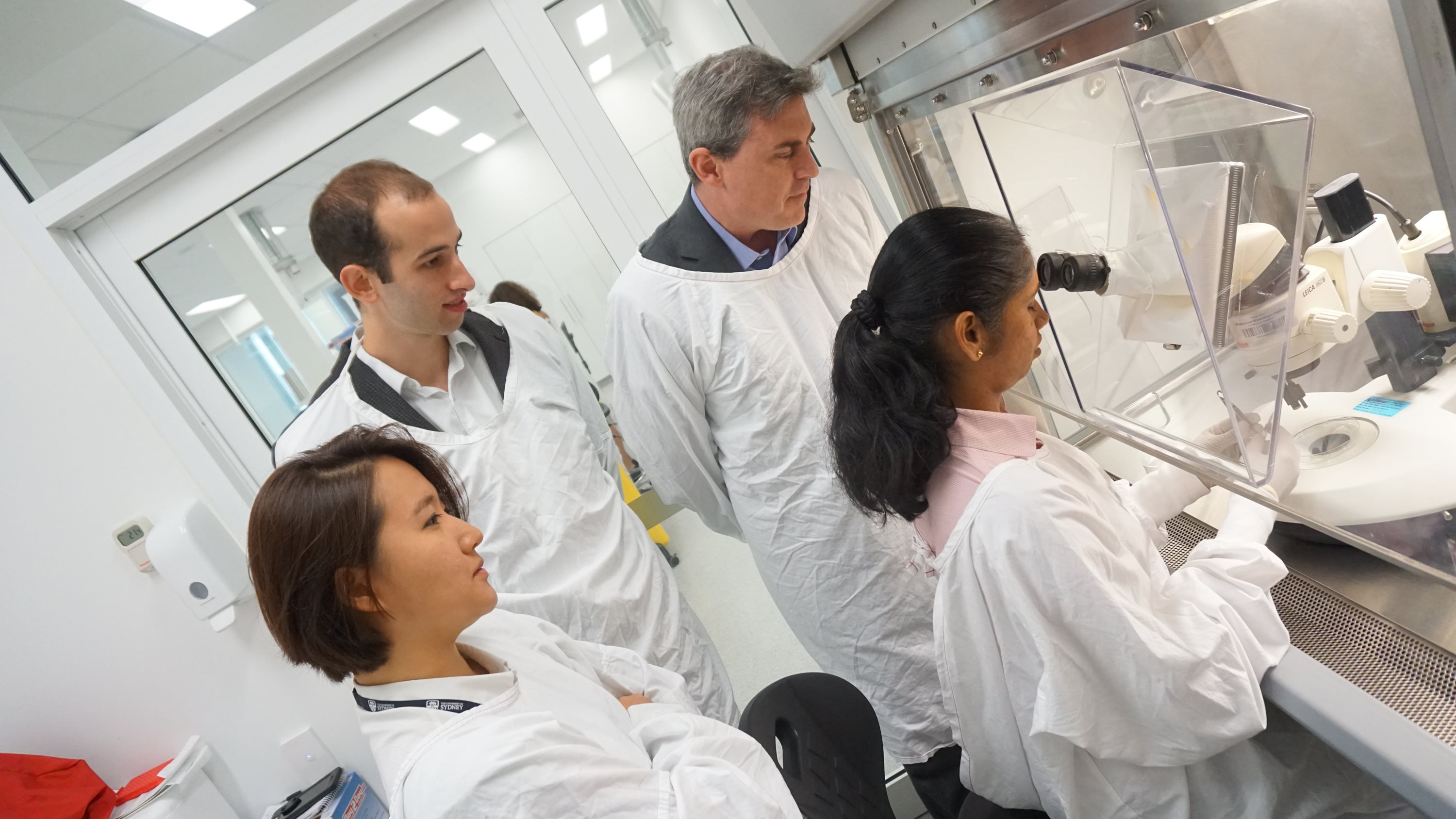March 7, 2016 Print
Hope is on the horizon for Australians suffering from glaucoma as medical researchers investigate the use of gene therapy to inform new personalised treatments for the disease.
 Dr Andrew White (Back right) and members of the Glaucoma Cell Biology Group
Dr Andrew White (Back right) and members of the Glaucoma Cell Biology Group
Researchers from The Westmead Institute for Medical Research are exploring whether genes associated with glaucoma risk can be controlled by repurposing “off the shelf” drugs to create specifically tailored and inexpensive glaucoma therapies.
Speaking during World Glaucoma Week (March 6-12), the Westmead Institute glaucoma specialist, Dr Andrew White said new therapies for this poorly understood disease were desperately needed and so far the results from their studies were promising.
“Glaucoma affects 400 000 Australians and costs the Australian economy approximately two billion dollars a year. Treatments continually need improvement and we think we are on the way to finding some of those therapies,” Dr White said.
In 2014, scientists from the Westmead Institute’s Centre for Vision Research were part of an international collaboration that identified three genetic variants associated with the most common form of glaucoma – primary open-angle glaucoma.
The world-first study, published in the prestigious journal Nature Genetics, paved the way for subsequent research which investigated the risk of developing glaucoma over time in people with these genetic variants.
Using data from the Blue Mountains Eye Study (BMES) – a longitudinal study that examined more than 3600 Blue Mountains residents aged 49 and over – the Westmead Institute researchers found that the previously discovered genetic variations relating to glaucoma were associated with the onset of the disease. They also determined that the genetic information could be useful in predicting glaucoma risk.
The BMES study was the first to correlate these abnormalities with glaucoma incidence in a known, stable, monitored population.
There are a now a number of genes found associated with increased risk of glaucoma,” Dr White said. “Nobody knows what they do or how they work. We are looking the mechanisms behind these genetic risk factors and how we can tailor specific treatments for those at risk.”
According to Dr White, who is also a clinician at the Westmead Hospital, these tailor-made treatments involve repurposing “off the shelf” medications, which will then be tested on participants from the Blue Mountains Eye Studies who were identified as carrying the genetic variations.
“Essentially, we are looking to create cheap, personalised medicine. There are a number of medication options we are exploring and we are still some way from a clinical trial,” Dr White said.
Glaucoma is the leading cause of irreversible blindness worldwide. However, it is a largely invisible disease and 50 per cent of people with glaucoma in Australia are undiagnosed.
“Glaucoma can make it very difficult for people to cope in their day to day activities. In some cases of advanced glaucoma, people can’t drive, they have very poor depth perception and their chances of falling down a flight of stairs is very high,” Dr White said.
“It’s World Glaucoma Week from the 6-12 March. This week is designed to raise awareness of glaucoma. I encourage everyone over the age of 40 to get an eye exam to test for the early signs of glaucoma.”